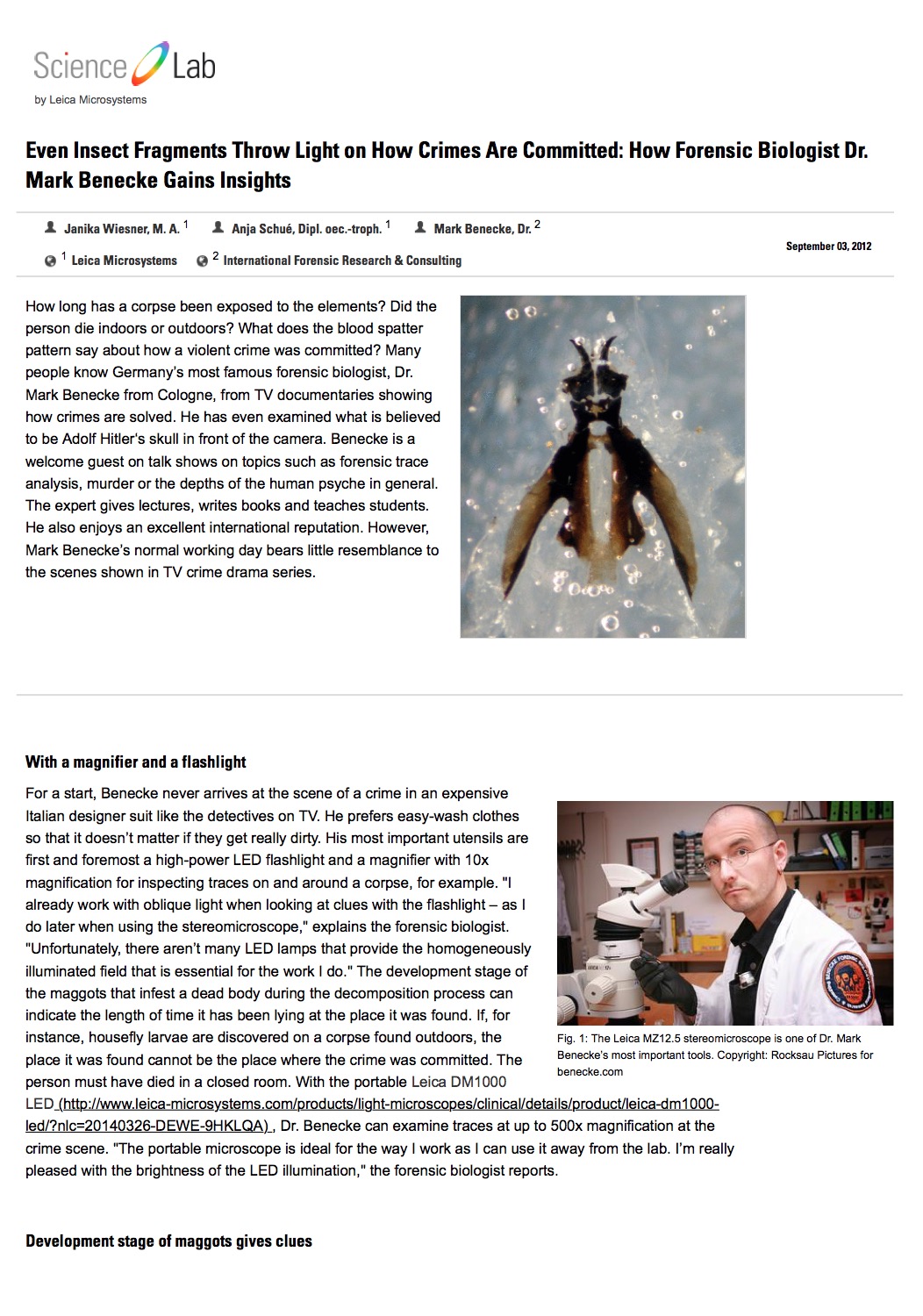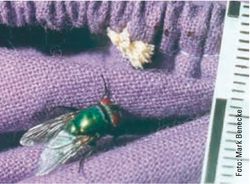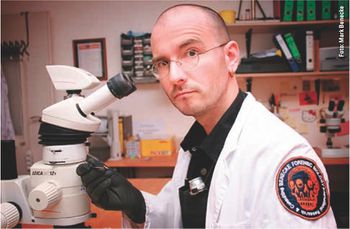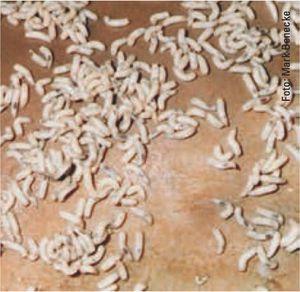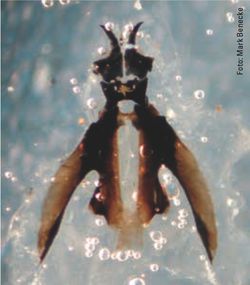2012 09 03: Leica Science Lab: Difference between revisions
No edit summary |
No edit summary |
||
| (4 intermediate revisions by the same user not shown) | |||
| Line 1: | Line 1: | ||
[[File:Leica science lab logo.jpg|150px|thumb]] | |||
[Source: [http://www.leica-microsystems.com/science-lab/even-insect-fragments-throw-light-on-how-crimes-are-committed-how-forensic-biologist-dr-mark-benecke-gains-insights/ <font color=lightgrey>Leica Science Lab online</font>] 09/2012]<br> | |||
=<font color=orange>Even insect fragments throw light on how crimes are committed:</font>= | =<font color=orange>Even insect fragments throw light on how crimes are committed:</font>= | ||
==<font color=orange>How Forensic Biologist Dr. Mark Benecke gains insights</font>== | ==<font color=orange>How Forensic Biologist Dr. Mark Benecke gains insights</font>== | ||
[More [[All Mark Benecke Publications|articles from MB]]] [Articles [ | [More [[All Mark Benecke Publications|articles from MB]]] [Articles [http://wiki2.benecke.com/index.php?title=Media#Interviews_.26_Articles <font color=lightgrey>about MB</font>]]<br> | ||
'''FROM JANIKA WIESNER'''<BR> | |||
<html><a href="http://wiki2.benecke.com/images/0/07/Even_Insect_Fragments_Throw_Light_on_How_Crimes_Are_Committed_How_Forensic_Biologist_Dr_Mark_Benecke_Gains_Insights_Leica_Science_Lab.pdf" target="_blank"><img src="http://wiki2.benecke.com/images/3/39/Even_Insect_Fragments_Throw_Light_on_How_Crimes_Are_Committed_How_Forensic_Biologist_Dr_Mark_Benecke_Gains_Insights_Leica_Science_Lab_preview.jpg" border="0" height="150" align="middle"><figcaption>Click for PDF!</figcaption></a></html> | |||
'''How long has a corpse been exposed to the elements? Did the person die indoors or outdoors? What does the blood spatter pattern say about how a violent crime was committed? Many people know Germany’s most famous forensic biologist, Dr. Mark Benecke from Cologne, from TV documentaries showing how crimes are solved. He has even examined what is believed to be Adolf Hitler‘s skull in front of the camera. Benecke is a welcome guest on talk shows on topics such as forensic trace analysis, murder or the depths of the human psyche in general. The expert gives lectures, writes books and teaches students. He also enjoys an excellent international reputation. However, Mark Benecke’s normal working day bears little resemblance to the scenes shown in TV crime drama series.'''<br> | '''How long has a corpse been exposed to the elements? Did the person die indoors or outdoors? What does the blood spatter pattern say about how a violent crime was committed? Many people know Germany’s most famous forensic biologist, Dr. Mark Benecke from Cologne, from TV documentaries showing how crimes are solved. He has even examined what is believed to be Adolf Hitler‘s skull in front of the camera. Benecke is a welcome guest on talk shows on topics such as forensic trace analysis, murder or the depths of the human psyche in general. The expert gives lectures, writes books and teaches students. He also enjoys an excellent international reputation. However, Mark Benecke’s normal working day bears little resemblance to the scenes shown in TV crime drama series.'''<br> | ||
| Line 42: | Line 44: | ||
<i>With many thanks to Claudia Moch and Janika Wiesner for authorization.</i><br> | <i>With many thanks to Claudia Moch and Janika Wiesner for authorization.</i><br> | ||
===<font color=orange>suggested readings</font>=== | |||
<i> | |||
* [[2017 08 Zimmer eins: Power|"Sind Sie ein Nerd, Dr. Mark Benecke?"]] <font size="-2" color="#FF0000" face="helvetica">GERMAN TEXT</font><br> | |||
* [[Fetish & Gothic Obsession|Vorwort zum Fetischbuch von Martin Black]] <font size="-2" color="#FF0000" face="helvetica">GERMAN TEXT</font><br> | |||
* [[2011-02 Skeptiker: Magnetische Menschen|Magnetische Menschen]] <font size="-2" color="#FF0000" face="helvetica">GERMAN TEXT</font><br> | |||
* [[2011-05 Skeptical Inquirer: The Numerology of 23|The Numerology of 23]]<br> | |||
* [[2012 09 Greatest Berlin: Woher sollen Kinder Plutonium bekommen|Woher sollen Kinder Plutonium bekommen?]] <font size="-2" color="#FF0000" face="helvetica">GERMAN TEXT</font><br> | |||
* [[2017 10 Badische Zeitung Ich mag die klaren Fragen der Kids|Ich mag die klaren Fragen der Kids]] <font size="-2" color="#FF0000" face="helvetica">GERMAN TEXT</font><br> | |||
* [[2012 ich TU WAS: Die Stundenzeiger der Totenuhr|Die Stundenzeiger der Totenuhr]] <font size="-2" color="#FF0000" face="helvetica">GERMAN TEXT</font><br> | |||
</i> | |||
Latest revision as of 15:33, 17 January 2018
[Source: Leica Science Lab online 09/2012]
Even insect fragments throw light on how crimes are committed:
How Forensic Biologist Dr. Mark Benecke gains insights
[More articles from MB] [Articles about MB]
FROM JANIKA WIESNER
How long has a corpse been exposed to the elements? Did the person die indoors or outdoors? What does the blood spatter pattern say about how a violent crime was committed? Many people know Germany’s most famous forensic biologist, Dr. Mark Benecke from Cologne, from TV documentaries showing how crimes are solved. He has even examined what is believed to be Adolf Hitler‘s skull in front of the camera. Benecke is a welcome guest on talk shows on topics such as forensic trace analysis, murder or the depths of the human psyche in general. The expert gives lectures, writes books and teaches students. He also enjoys an excellent international reputation. However, Mark Benecke’s normal working day bears little resemblance to the scenes shown in TV crime drama series.
With a magnifier and a flashlight
For a start, Benecke never arrives at the scene of a crime in an expensive Italian designer suit like the detectives on TV. He prefers easy-wash clothes so that it doesn’t matter if they get really dirty. His most important utensils are first and foremost a high-power LED flashlight and a magnifier with 10x magnification for inspecting traces on and around a corpse, for example. “I already work with oblique light when looking at clues with the flashlight – as I do later when using the stereomicroscope,” explains the forensic biologist. “Unfortunately, there aren’t many LED lamps that provide the homogeneously illuminated field that is essential for the work I do.” The development stage of the maggots that infest a dead body during the decomposition process can indicate the length of time it has been lying at the place it was found. If, for instance, housefly larvae are discovered on a corpse found outdoors, the place it was found cannot be the place where the crime was committed. The person must have died in a closed room. With the portable Leica DM1000 LED, Dr. Benecke can examine traces at up to 500x magnification at the crime scene. “The portable microscope is ideal for the way I work as I can use it away from the lab. I’m really pleased with the brightness of the LED illumination,” the forensic biologist reports.
Development stage of maggots gives clues
Once he has finished inspecting the crime scene, Benecke takes the samples back to the lab. He uses the Leica MZ12 stereomicroscope to examine the maggots he has found on the corpse, for example. He can identify the species of blowfly the maggots belong to from the mouth parts . The size and stage of development of the maggots tell him how long the body must have been lying at the place it was found. “The instruments have to be extremely hard-wearing for the work I do,” says Benecke. “The Leica MZ12 is very robust and has a sound fine drive. My colleague and I often work with relatively low magnifications to get a large field of view and a large working distance. The stereomicroscope also has to be ready to use immediately. If, say, we want to examine decaying stomach contents, we have no time to lose. The Leica MZ12 meets all these requirements.” The forensic biologist mainly uses oblique light on the stereomicroscope, too. Sometimes he investigates tiny parts of insects left behind on the adhesive tape stuck to the body to get fiber traces. Benecke and his co-worker Kristina Baumjohann inspect large quantities of residue under the Leica MZ12 that cannot be differentiated from dirt particles with the naked eye, and look for insect fragments. If they find parts of houseflies, for example, it again suggests that the person met his or her death indoors.
Avoiding assumptions
Unlike most TV detectives, Benecke is not a police officer, but a publicly appointed and sworn expert that anyone can hire. He prefers his clients to make as few assumptions as possible: “I’m often called by a victim’s parents, for example,” says Benecke. “These are cases where the family of a victim can sense that something’s wrong. Unlike the inspectors working on the case, they don’t say: “Well, he’s the one who gets the life insurance” or “He stole the man’s girlfriend”. My clients often don’t know any of that and just say: “There’s a red mark there, why isn’t anybody taking any interest in it?” The forensic biologist is then asked by the prosecution or the defense to provide a report, in which he explains, backed up by a large number of photos, what he can deduce from the relevant traces.
Spotting the shortcomings in the investigation
Mark Benecke does have one thing in common with the TV detectives, though: In emergencies he can be contacted around the clock. Occasionally, a crime novelist will call him on his emergency number to ask if it’s possible to dissolve corpses in hydrochloric acid. “That’s not an emergency, of course,” says the forensic biologist. “Due to my decades of experience, I am frequently consulted when detectives get stuck or to find out the clues that the detectives didn’t take seriously. I’m supposed to spot the mistake. Which clues weren’t examined? This doesn’t happen deliberately, but because the people involved have not noticed relevant details or thought they weren’t important.” In one case, Mark Benecke was called to a crime scene that was being re-investigated six years after a woman had been convicted of murdering her mother. At the time, the verdict had been based on the fact that there were traces of the victim’s blood on the knife used by the murderer, although there were no fingerprints. “At the crime scene, my colleague of that time and I tried to move like the murderer without knowing what motivated her,” relates the forensic biologist. “Our thoughts were: Where was the body? How far do the arms reach? Where are the physical contact points? We then went through the crime scene and finally reached a drawer containing a glove with blood of the murderer. We were thus able to prove that the grounds for the judgment were false because of the mistakes that had been made securing the evidence.”
It takes more than one clue to solve a case
In TV crime dramas, it’s often the one all-important clue that solves the case. Again, this is not what real forensic work is like, according to Mark Benecke: “I try to tell my students that in forensics you don’t get this CSI magic where an instrument coughs up a result that solves the case,” says the forensic biologist. “We sometimes work with such tiny amounts of trace material that we can hardly see it even under a microscope. I have worked on suspected sexual offenses where I couldn’t see any sperm, but there was enough material on the smear preparation for DNA analysis. Another example is the death of a woman for which Benecke reconstructed the blood traces. The woman had gone for a walk round the block after an argument with her partner and was found beaten to death at her front door. “I couldn’t tell whether she had been murdered by her partner or by a stranger. I could only show the court the pattern and the direction of the blood spatters,” explains Benecke. “After that, it was up to the judge to decide.”
Crime rate on the decrease
The forensic biologist also studies the psychological background of crimes. He strictly refuses to use categories like “evil”. “Evil is a construct of the human imagination”, he maintains. “If everyone behaved reasonably, that is to say, if people just talked to each other, it would change a lot. Basically, the crime rate in Germany is decreasing – this is something that most people don’t realize. Psychopaths like the Norwegian spree killer Anders Behring Breivik, who took the lives of 77 victims, are a different matter. Such people will always commit crimes. But cases like this are boring from a forensic point of view. The crimes are so obvious that the traces are completely insignificant.”
With many thanks to Claudia Moch and Janika Wiesner for authorization.
suggested readings
- "Sind Sie ein Nerd, Dr. Mark Benecke?" GERMAN TEXT
- Vorwort zum Fetischbuch von Martin Black GERMAN TEXT
- Magnetische Menschen GERMAN TEXT
- Woher sollen Kinder Plutonium bekommen? GERMAN TEXT
- Ich mag die klaren Fragen der Kids GERMAN TEXT
- Die Stundenzeiger der Totenuhr GERMAN TEXT
